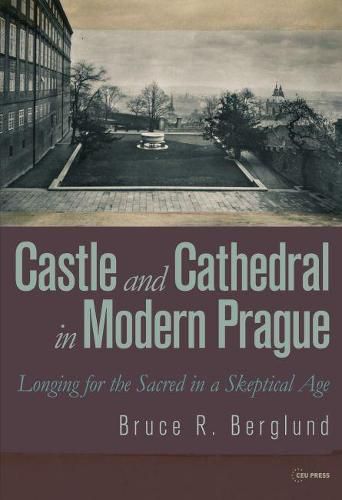Readings Newsletter
Become a Readings Member to make your shopping experience even easier.
Sign in or sign up for free!
You’re not far away from qualifying for FREE standard shipping within Australia
You’ve qualified for FREE standard shipping within Australia
The cart is loading…






Six million people visit Prague Castle each year. Here is the story of how this ancient citadel was transformed after World War I from a neglected, run-down relic into the seat of power for independent Czechoslovakia-and the symbolic center of democratic postwar Europe.
The restoration of Prague Castle was a collaboration of three remarkable figures in twentieth-century east central Europe: Tomas Masaryk, the philosopher who became Czechoslovakia’s first president; his daughter Alice, a social worker trained in the settlement houses of Chicago who was founding director of the Czechoslovak Red Cross and her father’s trusted confidante; and the architect, Joze Plecnik of Slovenia, who integrated reverence for Classical architecture into distinctly modern designs. Their shared vision saw the Castle not simply as a government building or historic landmark but as the sacred center of the new republic, even the new Europe-a place that would embody a different kind of democratic politics, rooted in the spiritual and the moral.
With a biographer’s attention to detail, historian Bruce Berglund presents lively and intimate portraits of these three figures. At the same time, he also places them in the context of politics and culture in interwar Prague and the broader history of religion and secularization in modern Europe. Gracefully written and grounded in a wide array of sources, Castle and Cathedral in Modern Prague is an original and accessible study of how people at the center of Europe, in the early decades of the twentieth century, struggled with questions of morality, faith, loyalty, and skepticism.
$9.00 standard shipping within Australia
FREE standard shipping within Australia for orders over $100.00
Express & International shipping calculated at checkout
Six million people visit Prague Castle each year. Here is the story of how this ancient citadel was transformed after World War I from a neglected, run-down relic into the seat of power for independent Czechoslovakia-and the symbolic center of democratic postwar Europe.
The restoration of Prague Castle was a collaboration of three remarkable figures in twentieth-century east central Europe: Tomas Masaryk, the philosopher who became Czechoslovakia’s first president; his daughter Alice, a social worker trained in the settlement houses of Chicago who was founding director of the Czechoslovak Red Cross and her father’s trusted confidante; and the architect, Joze Plecnik of Slovenia, who integrated reverence for Classical architecture into distinctly modern designs. Their shared vision saw the Castle not simply as a government building or historic landmark but as the sacred center of the new republic, even the new Europe-a place that would embody a different kind of democratic politics, rooted in the spiritual and the moral.
With a biographer’s attention to detail, historian Bruce Berglund presents lively and intimate portraits of these three figures. At the same time, he also places them in the context of politics and culture in interwar Prague and the broader history of religion and secularization in modern Europe. Gracefully written and grounded in a wide array of sources, Castle and Cathedral in Modern Prague is an original and accessible study of how people at the center of Europe, in the early decades of the twentieth century, struggled with questions of morality, faith, loyalty, and skepticism.